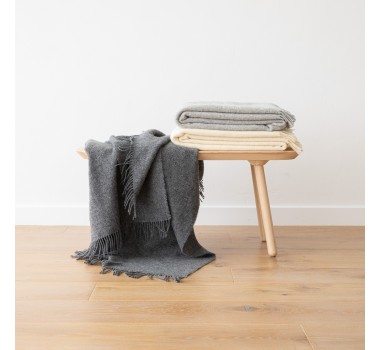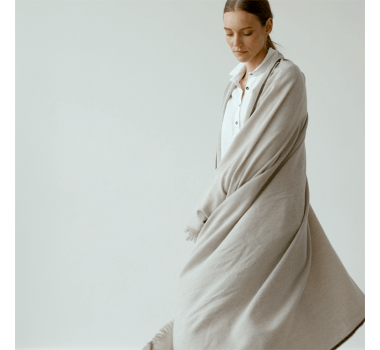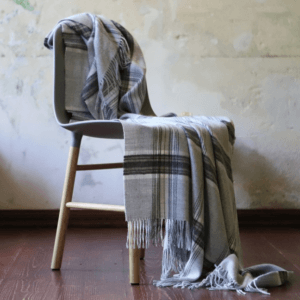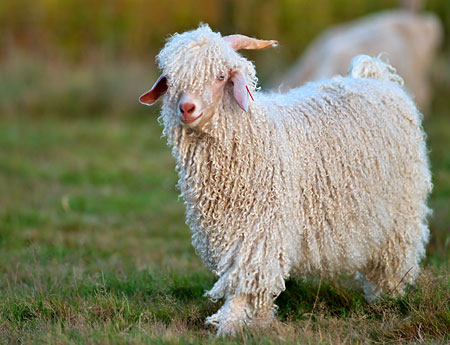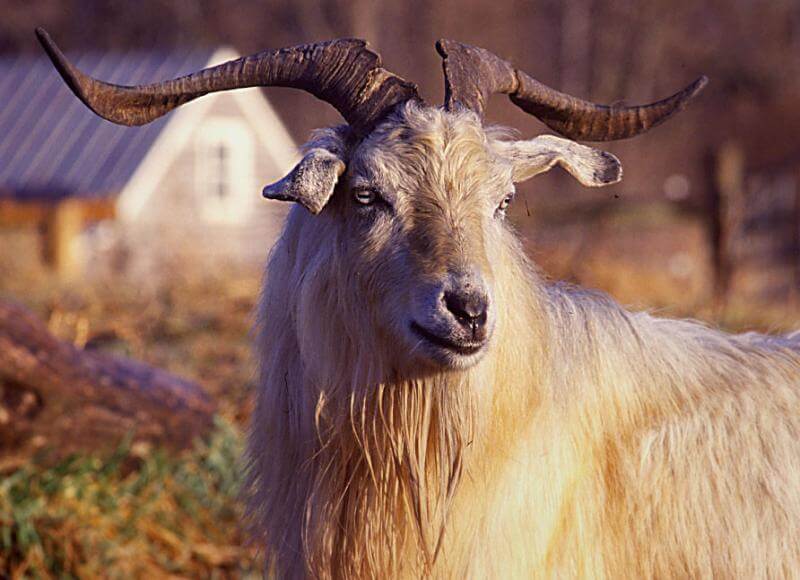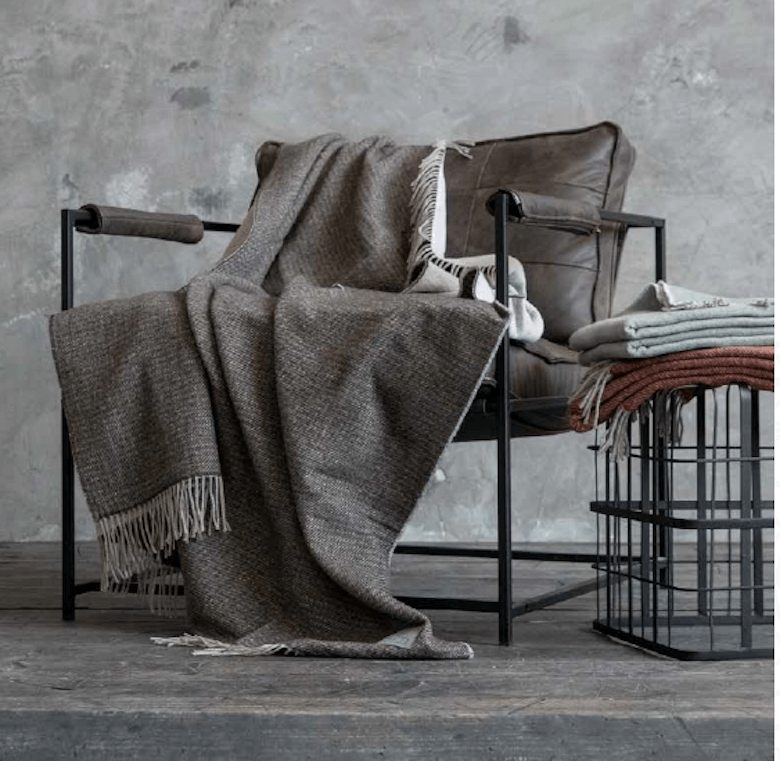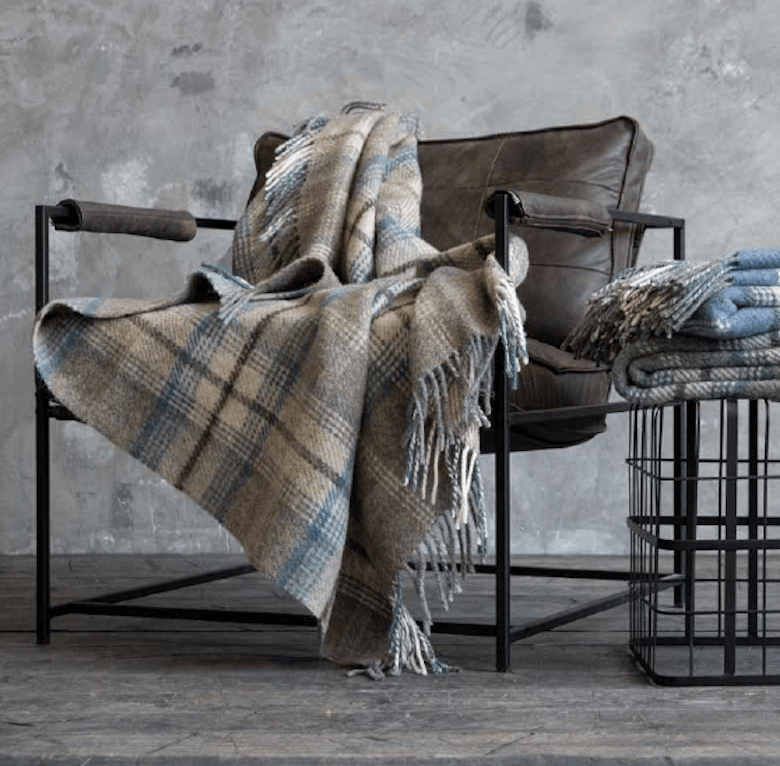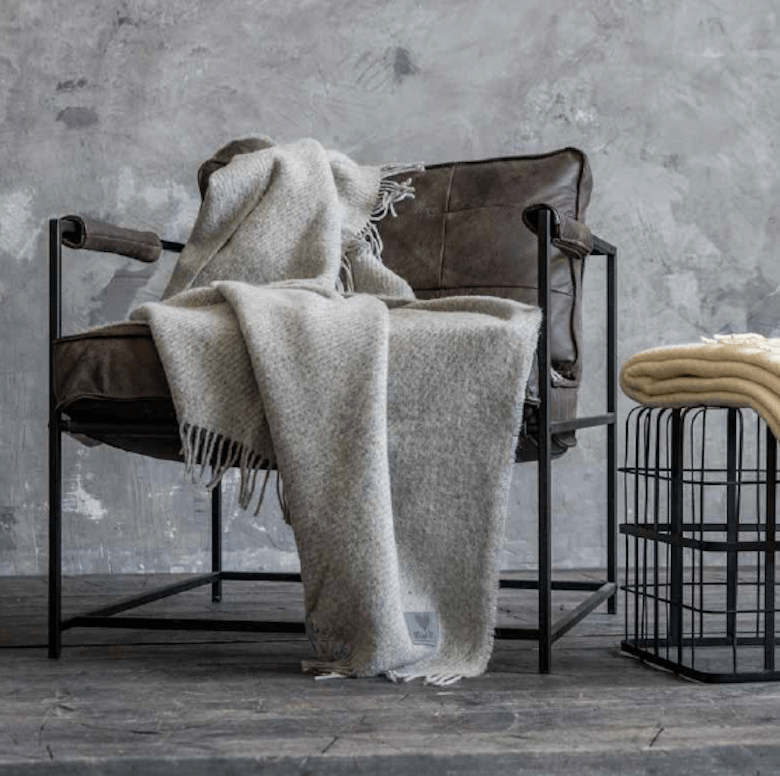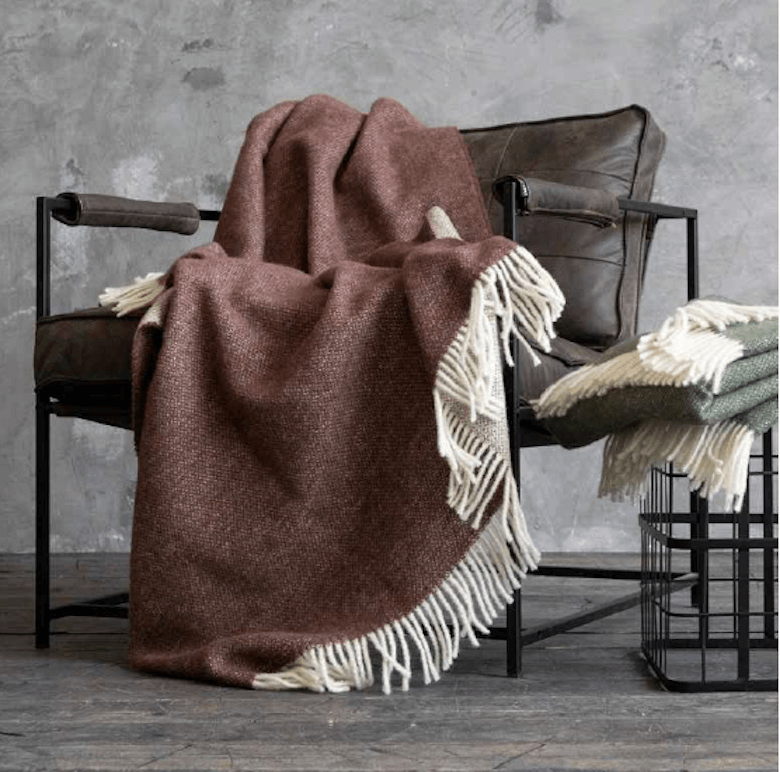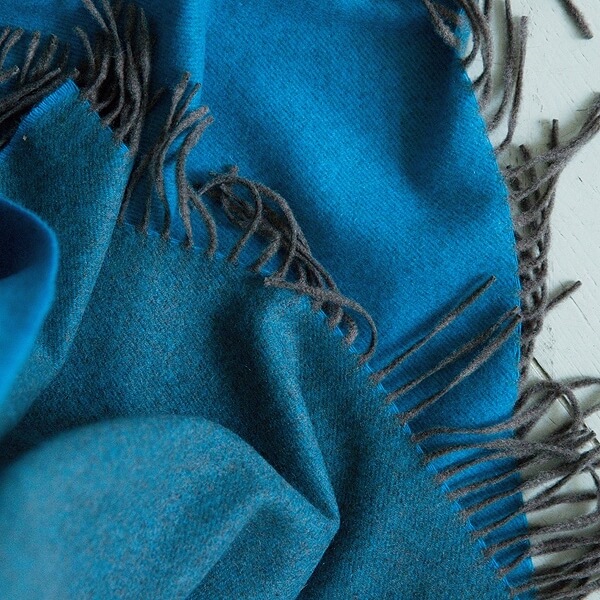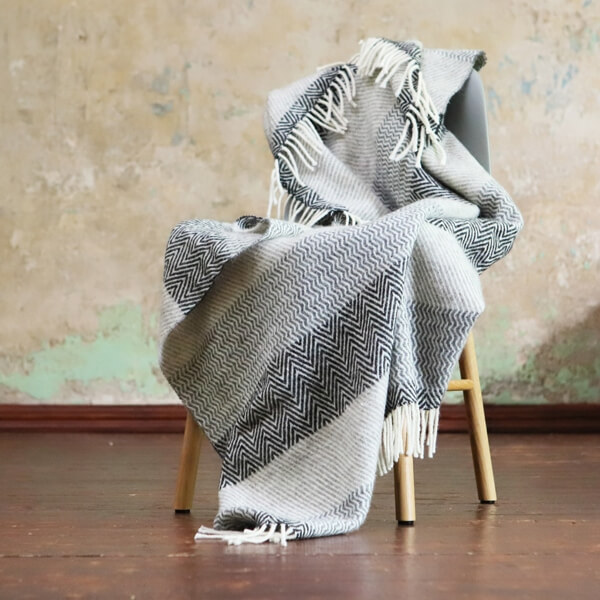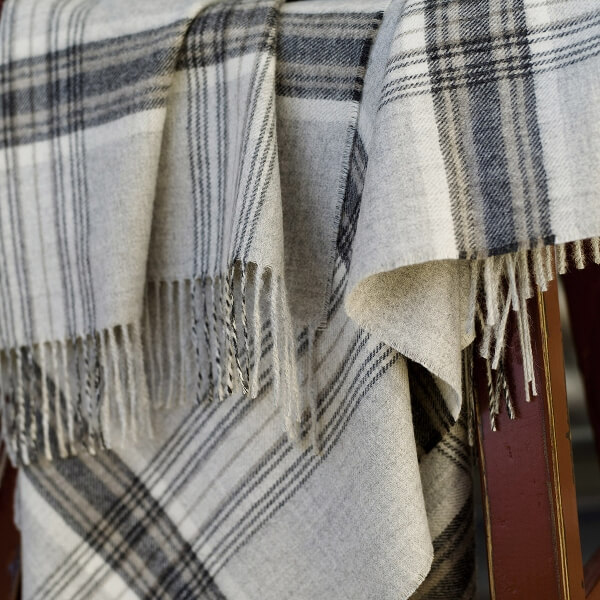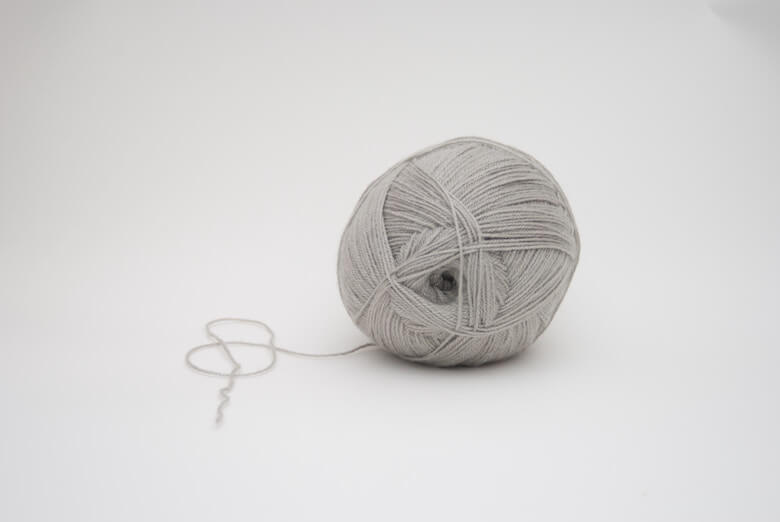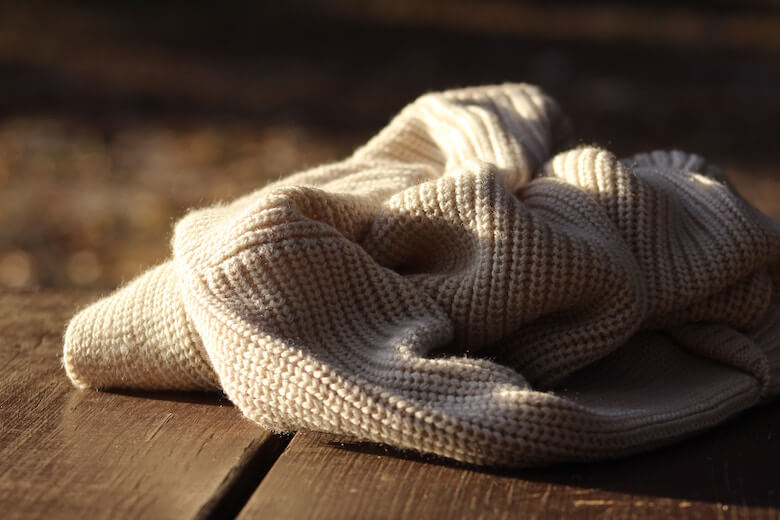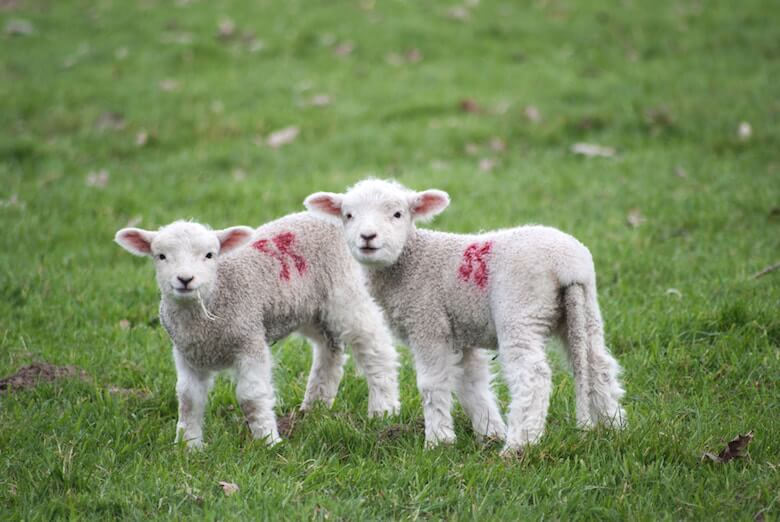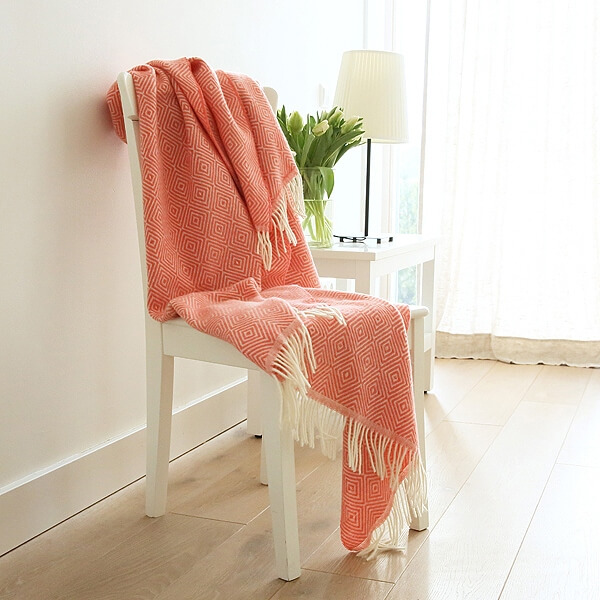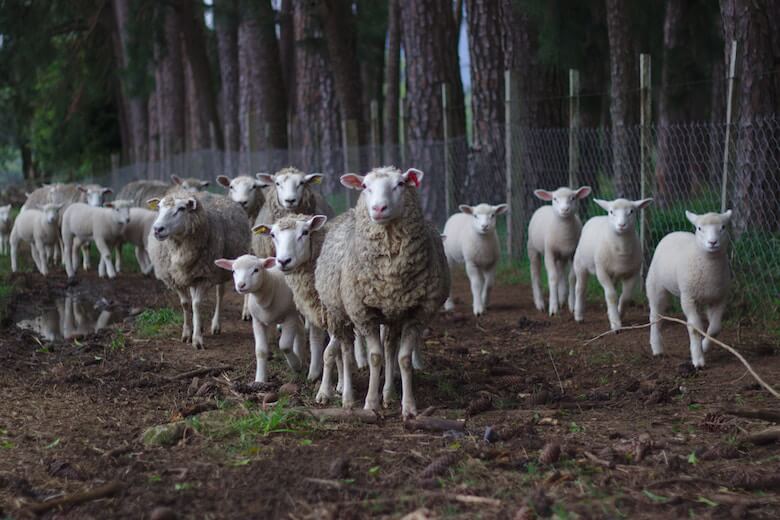Do you have one particular wool throw that you love for its colours and pattern but that just feels too itchy to use? We at WoolMe produce sumptuously soft throws and blankets, but if you buy one elsewhere that isn’t pleasant on the skin, we’ve got the solution. Discover how to soften a wool throw and make it ultra-cosy and huggable.
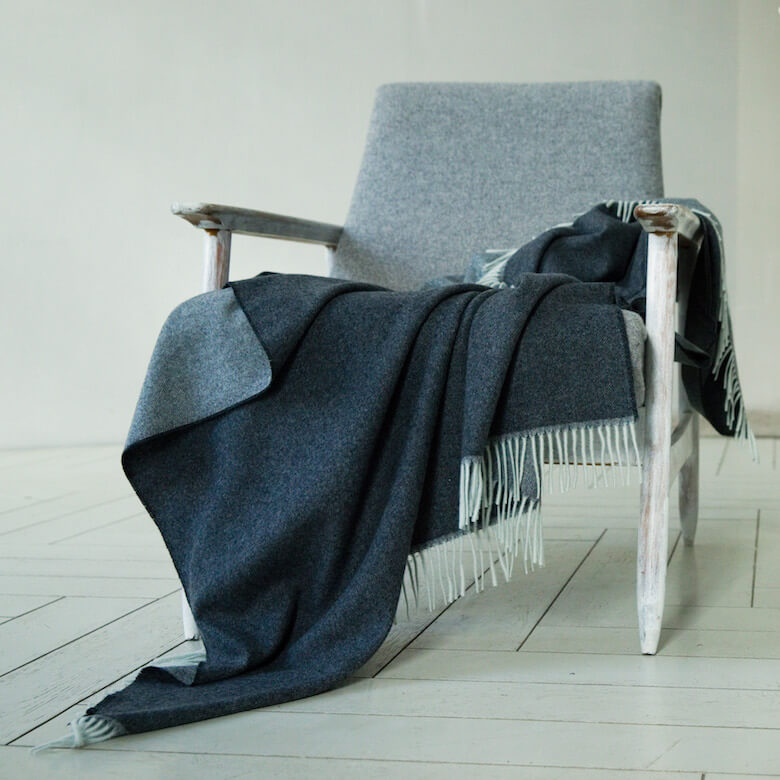
The softness of a wool throw will depends on the structure of the wool fibres. Different types of wool have varying sizes of fibres, measured in microns. The lower the micron value, the softer the wool. If you have a wool throw or blanket it’s probably partly due to having coarse fibres. But some chemicals used in wool processing can result in wool feeling uncomfortable to touch. To return it to its natural, pretreated softness, try this clever hack:
Learn this wool throw softening trick
- Fill your bathroom tub with lukewarm water and add 1 tablespoon of a gentle, no-rinse wool detergent containing lanolin. This is a natural softener derived from sheep that creates the protective layer of waxy substance that is found on their wool fleeces. For an extra softness boost, add a nut-sized portion of leave-in hair conditioner to the water, and mix.
- Gently swoosh the water around to combine the detergent and conditioner.
- Place your wool throw in the tub and hold it under the water for a few seconds to ensure the fibres absorb the wash solution.
- Leave the wool throw to soak for 15-20 minutes. Really thick wool may need to soak for up to half an hour.
- Remove the throw from the tub, gently pressing out any water. Do not wring or pull the fabric. Lay it flat between two bedsheets or towels somewhere sheltered and warm to dry out. Avoid direct sunlight when drying any woollen garments.
- Once your wool throw is dry it should be super-soft and snuggly. Perfect for curling up with on the sofa this Winter, or for adding an extra layer of comfy warmth to your bed. If you want even more softness, repeat the process.
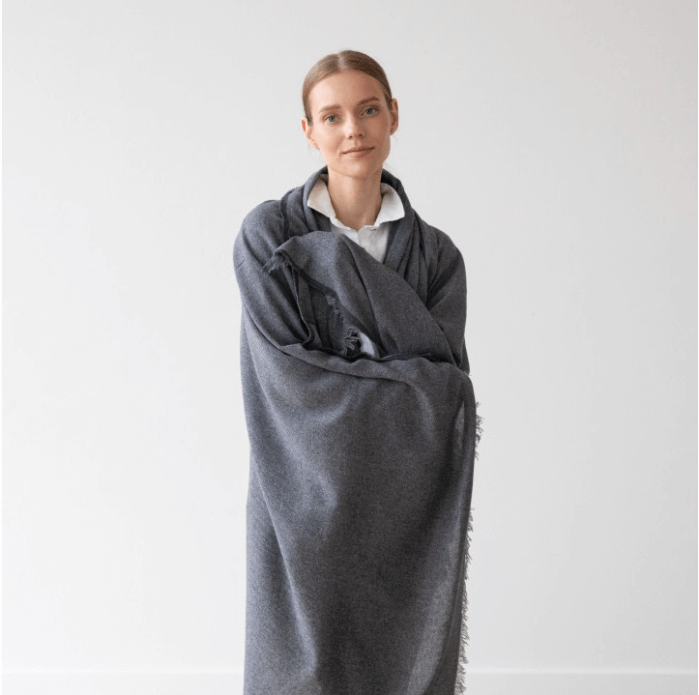
Knowing how to soften a wool throw is particularly useful if you have young children or sensitive skin. You can use the same technique on woolly jumpers or scarves too, just make sure you don’t pull the garment out of shape when wet.
Understanding how wool fibres work and how to care for wool products means you can get the best from your textiles. Not only will they feel lovely against your skin, they will stay strong and last longer, making them a sustainable choice for the modern home.
Find out more about looking after wool throws and blankets here.

